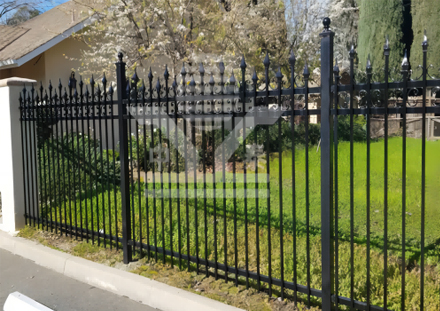Exploring Perforated Mild Steel A Versatile Material in Modern Applications
Perforated mild steel has emerged as a versatile and essential material in various industries, owing to its unique properties and benefits. As an alloy of iron and carbon, mild steel, which typically contains a low percentage of carbon, is prized for its ductility, toughness, and malleability. When perforated, this material takes on new dimensions of utility, combining strength with enhanced aesthetic and functional qualities.
The Basics of Perforation
Perforation refers to the process of creating holes in a material. In the case of mild steel, this process can be achieved through various methods, including punching, laser cutting, and drilling. The resulting perforated sheets can have a variety of hole sizes, shapes, and spacing arrangements, leading to an array of design possibilities. This adjustability allows engineers and architects to tailor the material to meet specific requirements for strength, airflow, light transmission, and aesthetic appeal.
Applications in Architecture and Design
One of the most compelling applications of perforated mild steel is in architectural and design contexts. Perforated sheets are extensively used in building facades, sunshades, and interior design elements. Their ability to allow light and air to flow through while providing privacy and protection makes them particularly appealing for modern architecture. For example, perforated metal screens can help regulate solar heat gain in buildings, contributing to energy efficiency and occupant comfort.
Additionally, the aesthetic qualities of perforated mild steel cannot be overlooked. It offers a sleek, contemporary look that can enhance the visual appeal of structures. The patterns created by perforation can be customized to fit the overall design ethos of a project. Artists and designers have also embraced perforated mild steel as a medium, using it to create stunning sculptural works that play with light and shadow.
Industrial Uses
Beyond architectural applications, perforated mild steel is a staple in various industrial sectors. Its durability and strength make it ideal for manufacturing applications, including filters, screens, and guards. For instance, perforated sheets are commonly used in the automotive and aerospace industries for lightweight components that do not compromise on strength. Moreover, in the construction industry, these sheets serve as reinforcement in concrete, enhancing the structural integrity of buildings.
perforated mild steel

Perforated mild steel is also prevalent in the production of storage solutions, such as shelving and racking systems. The holes enable airflow, reducing dust buildup, while the robust nature of mild steel ensures that these storage solutions can support heavy loads. In agricultural settings, perforated metal is used in various equipment and machinery, facilitating processes that require ventilation or filtering.
Benefits of Using Perforated Mild Steel
The advantages of using perforated mild steel are numerous. For one, it is lightweight yet strong, making it easy to handle and install without sacrificing structural integrity. This balance of weight and strength is particularly valuable in applications where reducing overall weight is crucial, such as in vehicular design.
Another significant benefit is its cost-effectiveness. Mild steel is relatively inexpensive compared to other metals, and its durability means that structures made from this material can have a long lifespan, leading to lower maintenance costs over time. Additionally, the versatility in design allows for custom solutions that can be adapted to various specifications, providing value in both function and aesthetics.
Environmental Considerations
In today’s environmentally conscious world, the sustainability of materials is a critical factor in their selection. Mild steel is recyclable, making perforated mild steel an eco-friendly option for many applications. This characteristic aligns well with global trends towards sustainable building practices and responsible manufacturing.
Conclusion
In summary, perforated mild steel stands out as a crucial material that bridges aesthetics and functionality across diverse fields, from architecture and design to industrial and agricultural applications. Its unique properties, combined with the increasing demand for sustainable materials, position perforated mild steel as a key player in modern manufacturing and construction. As industries continue to innovate, it is highly likely that the uses and popularity of perforated mild steel will only expand, making it an essential component of tomorrow’s infrastructures.
-
The Strength and Versatility of Aluminum Expanded Metal Mesh
NewsJun.10,2025
-
Safety Guards and Machine Enclosures Using Expanded Mesh
NewsJun.10,2025
-
Performance with Round Hole Perforated Mesh in Wall Panels
NewsJun.10,2025
-
How Steel Grating Trench Covers Distribute Weight Efficiently
NewsJun.10,2025
-
How Deck Mesh Railing Enhances Backyard Aesthetics
NewsJun.10,2025
-
Comparing Bar Thickness and Spacing in Steel Grating
NewsJun.10,2025
Subscribe now!
Stay up to date with the latest on Fry Steeland industry news.

